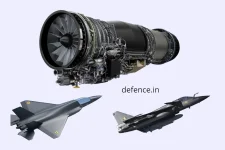- Views: 1K
- Replies: 16
In a major boost to India's domestic defence capabilities, a consortium led by TridenTech Engineering Pvt Ltd has successfully conducted the test firing of an indigenously developed 80mm unguided rocket.
The consortium, which includes TridenTech Engineering, IIT Madras, Bharat Electronics Limited (BEL), Research and Analysis Laboratory (RAL), and BILVA Technologies, pooled their expertise to design, develop, and manufacture the rocket. TridenTech Engineering played a central role, leading the project from conceptualization and design to production and testing.
IIT Madras, under the guidance of Prof. Ramakrishna, provided crucial academic and research support, leveraging its expertise in rocketry and propulsion systems. BEL, represented by Abhishek Hegde, contributed its extensive experience in defense electronics and systems integration.
RAL and BILVA Technologies further strengthened the collaboration with their specialized knowledge in materials research, control systems, and propulsion mechanics.
The successful test firing validated the rocket's fundamental design, stability, and performance parameters. This 80mm unguided rocket is intended to fulfill the Indian military's need for a cost-effective, easily deployable, and scalable rocket system for various combat scenarios.
While unguided, these rockets offer effective area suppression capabilities, particularly valuable in situations requiring saturation fire.
This achievement lays the groundwork for further development and refinement. Future efforts will focus on enhancing the rocket's payload capacity, range, and accuracy, potentially including the integration of guidance systems.
The consortium aims to conduct more rigorous testing to assess the rocket's performance under various operational conditions, including accuracy, payload flexibility, and deployment speed.
This successful test firing not only demonstrates the consortium's capability to produce high-quality indigenous rocket systems tailored to India's defence needs but also paves the way for future advancements in rocket technology and strengthens India's position in the global defense arena.

